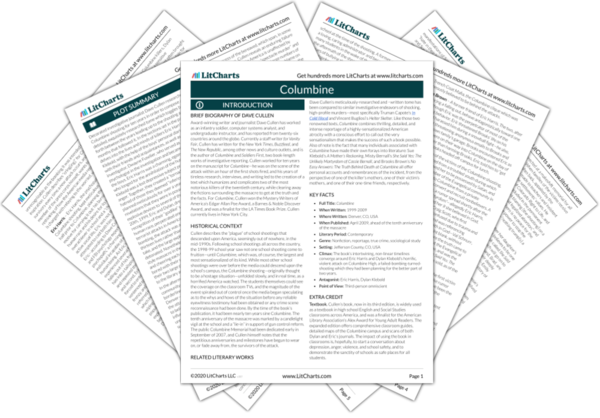The boys’ lives as the date of the attack approaches are both different and similar to what they have been—the boys are failing to participate in school, but continue to put up a playful front for their friends. Even violent language and the expression of murderous desire doesn’t rattle the boys’ school friends, illustrating that this kind of language is “normal” for Eric despite his “all-American” vibe. Life before the attacks is banal, but tinged with a fiery hatred just under the surface.


